More DX Conference Previews
-The Top NBA Draft Prospects in the Big East
-The Top NBA Draft Prospects in the Pac-12
-The Top NBA Draft Prospects in the Big 12
-The Top NBA Draft Prospects in the SEC
-The Top NBA Draft Prospects in the Big Ten
Top NBA Draft Prospects in the ACC
Part One
(#1) Dennis Smith
Part Two
(#2) Jayson Tatum
Part Three
(#3) Harry Giles
Part Four
(#4) Jonathan Isaac
Part Five
(#5) Marques Bolden
Part Six
(#6) Tyler Lydon
Part Seven
(#7) Omer Yurtseven
Part Eight
(#8) Jaron Blossomgame
Part Nine
(#9) Grayson Allen
Part Ten
(#10) Dwayne Bacon
Part Eleven
(#11) V.J. Beachem
Part Twelve
(#12) Frank Jackson
(#13) Tony Bradley
(#14) Donovan Mitchell
(#15) Justin Jackson
#16, Deng Adel, 6'7, Sophomore, SF/PF, Louisville
Jonathan Givony
A sprained MCL suffered early in the season put somewhat of a damper on Deng Adel's freshman campaign. After seeing decent minutes in Louisville's opener, and even starting the second game, Adel's knee injury forced him to sit out the next eight games, and severely limited his playing time until late in the ACC slate at the end of February.
Taking advantage of a full summer at Louisville to work on his body and skill-level, Adel responded with a strong showing at the adidas Nations camp in Los Angeles in August, ranking as the most productive collegiate player at the event.
With Louisville's top three scorers off to the pro ranks, Adel will be asked to shoulder a much more important role as a sophomore, which should tell us quite a bit more about the type of long term prospect he is.
As a freshman, Adel averaged just 4 points and 2.1 rebounds in 12 minutes per game, although his minutes did increase to 22 per game over the last five contests of the season, which were somewhat meaningless for Louisville due to their self-imposed postseason ban. Those 111 minutes in five competitive ACC games down the stretch allowed him to get him some much needed experience heading into his sophomore season, and helped scouts get a decent feel for what his strengths and weaknesses are as a prospect.
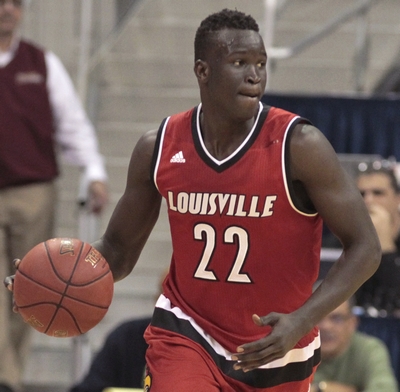
Standing 6'7, 200 pounds, Adel has a solid physical profile for a small forward, with good size and a frame that should fill out nicely in time. His wingspan is just average, measured 6'9 ½ at the Nike Skills Academy in 2014, and he doesn't compensate for that with freakish quickness or explosiveness, but he's a solid overall athlete for his position.
Adel shows signs of budding versatility offensively, contributing in a variety of areas for Louisville in his minutes on the floor.
He can make a spot-up jumper with clean shooting mechanics and reasonable accuracy, converting 7/20 attempts (35%) as a freshman in limited minutes. He does not possess a very quick release, nor is he much of a threat to make jumpers off the dribble, but he has the framework to continue to improve in this area as his career progresses, which will be very important for his chances.
Adel plays with good energy and seems to be a positive teammate, contributing to his team's ball-movement and being willing to push the ball ahead in transition or make a heady entry pass. He turned the ball over at a very high rate as a freshman (29% TO%), though, as he's still working on his advanced ball-handling skills and half-court decision making, which is to be expected considering his late start in basketball (as a 14-year old) and rocky freshman season due to injury.
At the moment, Adel isn't someone who is going to create a ton of high percentage looks for himself or teammates in the half-court, as he's mostly a straight-line dribbler who doesn't show much shake or ability to operate at different speeds.
With that said, Adel did show some flashes attacking closeouts, using shot-fakes to get his man in the air and attack the rim with purpose, or even some positive possessions out of the pick and roll. It will be interesting to see how he builds on this part of his game as a sophomore, as he'll likely be asked to shoulder more responsibility offensively.
Considering the role he'll likely be asked to play in the NBA, scouts will want to see Adel show progress defensively as well, as he was far from a lockdown defender in his limited opportunities as a freshman. Things moved a little too fast at times for him it appeared, as he got lost off the ball a little too frequently, and didn't make any real impact in the passing lanes (0.9 steals per-40) or as a shot-blocker (0.2 per-40), an indication that his feel for the game is still a work in progress. He has some lower body mobility issues that prevent him from sitting down in a low stance and sliding his feet along the perimeter, making him somewhat prone to getting burned off the bounce by smaller and quicker perimeter players.
Coming up with some strong defensive possessions at times against bigger players, Adel looked far more effective guarding forwards than wing-types as a freshman, which could hint at his future role as someone who slides between the 3 and 4 spots.
Players in this mold who can effectively guard either forward position, while being capable of spacing the floor, attacking a closeout, and making the extra pass, are increasingly popular in today's NBA, so Adel does have a ready-made role if he's able to make strides in some of the areas he already showed impressive flashes in. At the moment, it's not quite clear what Adel hangs his hat on a prospect, as he's not elite in any one facet of the game, but that will be much easier to gauge with a full season to evaluate him.
A highly engaging young man, with an incredible backstory, having fled war-torn Sudan for Australia, by way of Uganda, Adel will have no shortage of fans in many different countries cheering him on every step of the way. He's in a great situation to showcase himself at Louisville this season, who are ready to return to post-season action.
A sprained MCL suffered early in the season put somewhat of a damper on Deng Adel's freshman campaign. After seeing decent minutes in Louisville's opener, and even starting the second game, Adel's knee injury forced him to sit out the next eight games, and severely limited his playing time until late in the ACC slate at the end of February.
Taking advantage of a full summer at Louisville to work on his body and skill-level, Adel responded with a strong showing at the adidas Nations camp in Los Angeles in August, ranking as the most productive collegiate player at the event.
With Louisville's top three scorers off to the pro ranks, Adel will be asked to shoulder a much more important role as a sophomore, which should tell us quite a bit more about the type of long term prospect he is.
As a freshman, Adel averaged just 4 points and 2.1 rebounds in 12 minutes per game, although his minutes did increase to 22 per game over the last five contests of the season, which were somewhat meaningless for Louisville due to their self-imposed postseason ban. Those 111 minutes in five competitive ACC games down the stretch allowed him to get him some much needed experience heading into his sophomore season, and helped scouts get a decent feel for what his strengths and weaknesses are as a prospect.

Standing 6'7, 200 pounds, Adel has a solid physical profile for a small forward, with good size and a frame that should fill out nicely in time. His wingspan is just average, measured 6'9 ½ at the Nike Skills Academy in 2014, and he doesn't compensate for that with freakish quickness or explosiveness, but he's a solid overall athlete for his position.
Adel shows signs of budding versatility offensively, contributing in a variety of areas for Louisville in his minutes on the floor.
He can make a spot-up jumper with clean shooting mechanics and reasonable accuracy, converting 7/20 attempts (35%) as a freshman in limited minutes. He does not possess a very quick release, nor is he much of a threat to make jumpers off the dribble, but he has the framework to continue to improve in this area as his career progresses, which will be very important for his chances.
Adel plays with good energy and seems to be a positive teammate, contributing to his team's ball-movement and being willing to push the ball ahead in transition or make a heady entry pass. He turned the ball over at a very high rate as a freshman (29% TO%), though, as he's still working on his advanced ball-handling skills and half-court decision making, which is to be expected considering his late start in basketball (as a 14-year old) and rocky freshman season due to injury.
At the moment, Adel isn't someone who is going to create a ton of high percentage looks for himself or teammates in the half-court, as he's mostly a straight-line dribbler who doesn't show much shake or ability to operate at different speeds.
With that said, Adel did show some flashes attacking closeouts, using shot-fakes to get his man in the air and attack the rim with purpose, or even some positive possessions out of the pick and roll. It will be interesting to see how he builds on this part of his game as a sophomore, as he'll likely be asked to shoulder more responsibility offensively.
Considering the role he'll likely be asked to play in the NBA, scouts will want to see Adel show progress defensively as well, as he was far from a lockdown defender in his limited opportunities as a freshman. Things moved a little too fast at times for him it appeared, as he got lost off the ball a little too frequently, and didn't make any real impact in the passing lanes (0.9 steals per-40) or as a shot-blocker (0.2 per-40), an indication that his feel for the game is still a work in progress. He has some lower body mobility issues that prevent him from sitting down in a low stance and sliding his feet along the perimeter, making him somewhat prone to getting burned off the bounce by smaller and quicker perimeter players.
Coming up with some strong defensive possessions at times against bigger players, Adel looked far more effective guarding forwards than wing-types as a freshman, which could hint at his future role as someone who slides between the 3 and 4 spots.
Players in this mold who can effectively guard either forward position, while being capable of spacing the floor, attacking a closeout, and making the extra pass, are increasingly popular in today's NBA, so Adel does have a ready-made role if he's able to make strides in some of the areas he already showed impressive flashes in. At the moment, it's not quite clear what Adel hangs his hat on a prospect, as he's not elite in any one facet of the game, but that will be much easier to gauge with a full season to evaluate him.
A highly engaging young man, with an incredible backstory, having fled war-torn Sudan for Australia, by way of Uganda, Adel will have no shortage of fans in many different countries cheering him on every step of the way. He's in a great situation to showcase himself at Louisville this season, who are ready to return to post-season action.
#17, Andrew White, 6'7, RS Senior, Shooting Guard, Syracuse
Jeremy Bauman
A highly sought after RSCI Top-100 recruit coming out of high school, Andrew White spurned other major opportunities and committed to play for Head Coach Bill Self and the Kansas Jayhawks in the winter of his senior year back in 2011. The expectation was that White would be able to provide major scoring punch, especially as a catch-and-shoot option from the perimeter.
However, the swingman arrived to a stacked team in Lawrence and struggled to earn consistent playing time, seeing just 238 total minutes in his first two seasons combined. He transferred to Nebraska after his sophomore campaign, where he redshirted in 2014-15, before ultimately reviving his professional prospects with a 2015-16 redshirt senior campaign in which he scored 16.6 points per game and finally displayed his ability to be a true perimeter threat.
White's journey won't end at Nebraska, however, as he graduated this past spring and decided to transfer to Syracuse (much to the chagrin of many), where the 23-year old will play the final year of his eligibility for Head Coach Jim Boeheim on a talented Orange team in need of added perimeter firepower to compete in the loaded ACC.
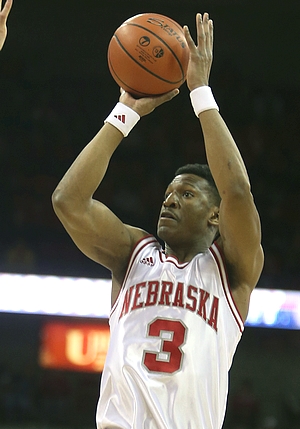
Standing at 6-7 and 210 pounds, White has excellent size and length combined with good strength and quickness for a shooting guard prospect. He changes ends very well from defense to offense, getting out wide and filling the wing as a transition threat. Defensively, he can use his frame to box out opponents, but doesn't use his physical prowess to his advantage as often as he should.
When projecting White to the next level, it's clear that perimeter scoring is his potential calling card, as he ranked in the 95th percentile of all players in college basketball as a spot-up shooter last season for Nebraska, according to Synergy Sports Tech. His success as a shooter stems from his consistency, as he has excellent pre-shot mechanics and prepares to shoot well before catching the ball. He has a smooth, compact and consistent release with great wrist action. Perhaps most importantly, White gets excellent elevation and shoots at the peak of his jump, which helps him to get his shot off over defenders and is crucial when projecting him to the next level. He converted an excellent 41.2% (87/211) of his attempts from behind the arc in his lone season at Nebraska.
White has a knack for moving without the ball, regularly flowing off of flair screens, down screens and hand-offs with the awareness and readiness to swiftly elevate and shoot. A product of his perimeter effectiveness, White floats along the edge of the 3-point line waiting for kick-outs and ball-reversals to take quick and unexpected shots. He has also flashed the ability to attack close-outs with one and two-dribble pull-ups effectively.
The Richmond, Virginia native thrived in transition because he's a dual threat; he runs the court well, gets out wide and uses long strides and good angles before finishing around the rim and is equally proficient spotting up from the perimeter, a useful skill in today's NBA.
From a playmaking standpoint, the swingman leaves a lot to be desired, especially considering his advanced age and experience. White struggles to create shots for himself off the bounce in half court sets, and has rarely been relied upon to create offense in pick-and-roll situations. He also posted an incredibly low 20 total assists in 563 total minutes of playing time last year, demonstrating a lack of vision, passing ability, IQ or willingness to get his teammates involved more often.
Entering his fifth season at the college level, White has been disappointing at the defensive end, especially for a wing player with above average physical attributes. His competitive nature is questionable, as he routinely gets caught sleeping when he's in weak-side help situations, and he gets beat on drives to the rim way more frequently than he should because he doesn't take smart angles when closing out. White also shows little resistance when screened and gambles to help the post when guarding shooters far too often for a player at his stage of development.
On a positive note, White does anticipate passing lanes well, has quick, strong hands and showed a willingness to box out and go after defensive rebounds on a regular basis. He led the Cornhuskers in rebounding with 5.9 per game and is an above average rebounder for his position.
Transferring to Syracuse to play for Jim Boeheim's 2-3 zone defense certainly isn't going to alleviate concerns about White's abilities as a man-to-man defender at the next level, besides the fact that it will be easier to hide them. Still, he must prove that he's willing to compete on a more regular basis to be taken more seriously by decision makers, as just being a spot-up shooter is not going to be enough to earn him rotation minutes or even a roster spot without something more to complement that.
White, who will have just turned 24 years old when the 2017 NBA Draft rolls around, will continue to get looks at the next level as long as he picks up the way he left off as a perimeter threat for Nebraska. He has major question marks on the defensive end, but his physical tools offer promise, and if his shooting last season can be sustained in a winning environment, NBA scouts and decision makers will certainly want to learn more about him.
A highly sought after RSCI Top-100 recruit coming out of high school, Andrew White spurned other major opportunities and committed to play for Head Coach Bill Self and the Kansas Jayhawks in the winter of his senior year back in 2011. The expectation was that White would be able to provide major scoring punch, especially as a catch-and-shoot option from the perimeter.
However, the swingman arrived to a stacked team in Lawrence and struggled to earn consistent playing time, seeing just 238 total minutes in his first two seasons combined. He transferred to Nebraska after his sophomore campaign, where he redshirted in 2014-15, before ultimately reviving his professional prospects with a 2015-16 redshirt senior campaign in which he scored 16.6 points per game and finally displayed his ability to be a true perimeter threat.
White's journey won't end at Nebraska, however, as he graduated this past spring and decided to transfer to Syracuse (much to the chagrin of many), where the 23-year old will play the final year of his eligibility for Head Coach Jim Boeheim on a talented Orange team in need of added perimeter firepower to compete in the loaded ACC.

Standing at 6-7 and 210 pounds, White has excellent size and length combined with good strength and quickness for a shooting guard prospect. He changes ends very well from defense to offense, getting out wide and filling the wing as a transition threat. Defensively, he can use his frame to box out opponents, but doesn't use his physical prowess to his advantage as often as he should.
When projecting White to the next level, it's clear that perimeter scoring is his potential calling card, as he ranked in the 95th percentile of all players in college basketball as a spot-up shooter last season for Nebraska, according to Synergy Sports Tech. His success as a shooter stems from his consistency, as he has excellent pre-shot mechanics and prepares to shoot well before catching the ball. He has a smooth, compact and consistent release with great wrist action. Perhaps most importantly, White gets excellent elevation and shoots at the peak of his jump, which helps him to get his shot off over defenders and is crucial when projecting him to the next level. He converted an excellent 41.2% (87/211) of his attempts from behind the arc in his lone season at Nebraska.
White has a knack for moving without the ball, regularly flowing off of flair screens, down screens and hand-offs with the awareness and readiness to swiftly elevate and shoot. A product of his perimeter effectiveness, White floats along the edge of the 3-point line waiting for kick-outs and ball-reversals to take quick and unexpected shots. He has also flashed the ability to attack close-outs with one and two-dribble pull-ups effectively.
The Richmond, Virginia native thrived in transition because he's a dual threat; he runs the court well, gets out wide and uses long strides and good angles before finishing around the rim and is equally proficient spotting up from the perimeter, a useful skill in today's NBA.
From a playmaking standpoint, the swingman leaves a lot to be desired, especially considering his advanced age and experience. White struggles to create shots for himself off the bounce in half court sets, and has rarely been relied upon to create offense in pick-and-roll situations. He also posted an incredibly low 20 total assists in 563 total minutes of playing time last year, demonstrating a lack of vision, passing ability, IQ or willingness to get his teammates involved more often.
Entering his fifth season at the college level, White has been disappointing at the defensive end, especially for a wing player with above average physical attributes. His competitive nature is questionable, as he routinely gets caught sleeping when he's in weak-side help situations, and he gets beat on drives to the rim way more frequently than he should because he doesn't take smart angles when closing out. White also shows little resistance when screened and gambles to help the post when guarding shooters far too often for a player at his stage of development.
On a positive note, White does anticipate passing lanes well, has quick, strong hands and showed a willingness to box out and go after defensive rebounds on a regular basis. He led the Cornhuskers in rebounding with 5.9 per game and is an above average rebounder for his position.
Transferring to Syracuse to play for Jim Boeheim's 2-3 zone defense certainly isn't going to alleviate concerns about White's abilities as a man-to-man defender at the next level, besides the fact that it will be easier to hide them. Still, he must prove that he's willing to compete on a more regular basis to be taken more seriously by decision makers, as just being a spot-up shooter is not going to be enough to earn him rotation minutes or even a roster spot without something more to complement that.
White, who will have just turned 24 years old when the 2017 NBA Draft rolls around, will continue to get looks at the next level as long as he picks up the way he left off as a perimeter threat for Nebraska. He has major question marks on the defensive end, but his physical tools offer promise, and if his shooting last season can be sustained in a winning environment, NBA scouts and decision makers will certainly want to learn more about him.
#18, Raymond Spalding, 6'10", Sophomore, Power Forward, Louisville
Derek Bodner
Freshman power forward Raymond Spalding was able to find a role on a deep Louisville team last season, averaging 5.6 points and 4.3 rebounds in 17.5 minutes per game for Rick Pitino and the Louisville Cardinals.
With defensive stalwart Chinanu Onuaku off to the NBA and playing for the Houston Rockets, along with a year of experience under his belt, Spalding should be in line for a significant increase in both his minutes and role, presenting him with a good opportunity to showcase his skills.

Spalding stands 6'10, with a rail-thin 215-pound frame, exceptional length, and great athleticism for the power forward position, which gives him some interesting potential on the defensive side of the court down the line if he's ever able to fully harness that into a fundamentally sound player.
On the offensive end, Spalding remains a raw player without any real calling card at this stage of his development. His primary contributions come off the ball, using his quickness and athleticism to sprint out in transition, cut off the ball, and crash the offensive glass from the perimeter. In fact, nearly 60% of his offensive possessions came out of these sets, according to Synergy Sports Technology.
Spalding is very quick off his feet, able to elevate around the rim before the defense is able to react and recover. That, combined with his quickness, makes him a real threat as a cutter off the ball, providing something for the defense to worry about despite not being a threat to create much offense for himself. Still, Spalding can seemingly float around aimlessly at times on offense, bailing the defense out and limiting his impact.
His athleticism also makes him a threat on the offensive glass, as he's simply quicker than most of the players trying to box him out and can be a real threat if his man doesn't seek him out when the shot goes up, averaging 4.0 offensive rebounds per 40 minutes, pace adjusted, despite his (seriously) under-developed physical frame. Spalding can struggle at times to finish at the rim, but this should improve in time as his frame fills out.
The rest of Spalding's offensive profile is still very much a work in progress. Synergy logged just 13 jump shots on the season, with wild results on the few attempts he took and a free-throw percentage of just 50% (on 56 attempts) which doesn't necessarily inspire much confidence. When he's left wide open and given a tremendous amount of time he has shown a little bit of touch, so there may be something there down the line, but it could take quite some time before it's really a weapon in games.
His ball handling ability is even more under-developed, as he rarely, if at all, even attempts to put the ball on the deck from the perimeter, despite a quickness advantage that could lend itself to a face-up game down the line if he is ever able to develop that skill. When he does put the ball on the floor it's usually little more than one or two dribbles in the post to gather himself (and make himself susceptible to being stripped by guards), and attempting to do more than that is an adventure at this time.
On the plus side, despite his skinny frame, Spalding does set good, hard screens, making a point to hold the screen the extra second it takes to free the ball handler. With Spalding's quickness he's still able to beat his man to the paint and become a real pick and dive threat, an area of his game that he could continue to expand, especially if he's able to add some weight to better absorb contact and add a semblance of a jump shot to make defenders think twice about sagging off of him.
Defensively is where Spalding makes the most impact, and where his long-term potential is. Spalding has very long arms, and covers ground exceptionally well, making him a threat as a weakside shot blocker at the rim (1.6 blocks per 40 minutes, pace adjusted), to force turnovers on the perimeter (2.2 steals per 40 minutes, pace adjusted), and also recovering out to the perimeter to contest shots. He has the quickness to switch onto the perimeter at times, presenting coaches with multiple different strategies to defend pick and rolls and pester ball handlers on the perimeter.
Still, Spalding is quite a ways away from making the most of this potential. Part of that is his lack of physical strength, and he can certainly get bullied both in the post and on the defensive glass, where he pulled down just 17.4% of the defensive rebounding opportunities while he was on the court, despite playing almost exclusively at power forward.
Beyond just the physical aspect of it, Spalding also struggles with his consistency, looking indecisive in his rotations and at times looking like his effort level comes and goes, and he can get lost off the ball as he seeks out opportunities to chase blocks. There's no questioning the sheer amount of physical talent Spalding has as a defender, and increasing his anticipation and engagement could unlock a real force for Pitino and the Cardinals.
Raymond Spalding has the combination of length, quickness, and disruptive defensive potential that has become en vogue in today's NBA, with the capability of blocking shots at the rim, forcing turnovers on the perimeter, and having positional versatility that coaches love.
Still, there's a significant gap to be bridged between potential and contribution, and this will be a big year for Spalding to prove he can make progress in his perimeter game, in his physicality, awareness, and consistency. If he can, the potential is there to see his stock rise quickly.
Freshman power forward Raymond Spalding was able to find a role on a deep Louisville team last season, averaging 5.6 points and 4.3 rebounds in 17.5 minutes per game for Rick Pitino and the Louisville Cardinals.
With defensive stalwart Chinanu Onuaku off to the NBA and playing for the Houston Rockets, along with a year of experience under his belt, Spalding should be in line for a significant increase in both his minutes and role, presenting him with a good opportunity to showcase his skills.

Spalding stands 6'10, with a rail-thin 215-pound frame, exceptional length, and great athleticism for the power forward position, which gives him some interesting potential on the defensive side of the court down the line if he's ever able to fully harness that into a fundamentally sound player.
On the offensive end, Spalding remains a raw player without any real calling card at this stage of his development. His primary contributions come off the ball, using his quickness and athleticism to sprint out in transition, cut off the ball, and crash the offensive glass from the perimeter. In fact, nearly 60% of his offensive possessions came out of these sets, according to Synergy Sports Technology.
Spalding is very quick off his feet, able to elevate around the rim before the defense is able to react and recover. That, combined with his quickness, makes him a real threat as a cutter off the ball, providing something for the defense to worry about despite not being a threat to create much offense for himself. Still, Spalding can seemingly float around aimlessly at times on offense, bailing the defense out and limiting his impact.
His athleticism also makes him a threat on the offensive glass, as he's simply quicker than most of the players trying to box him out and can be a real threat if his man doesn't seek him out when the shot goes up, averaging 4.0 offensive rebounds per 40 minutes, pace adjusted, despite his (seriously) under-developed physical frame. Spalding can struggle at times to finish at the rim, but this should improve in time as his frame fills out.
The rest of Spalding's offensive profile is still very much a work in progress. Synergy logged just 13 jump shots on the season, with wild results on the few attempts he took and a free-throw percentage of just 50% (on 56 attempts) which doesn't necessarily inspire much confidence. When he's left wide open and given a tremendous amount of time he has shown a little bit of touch, so there may be something there down the line, but it could take quite some time before it's really a weapon in games.
His ball handling ability is even more under-developed, as he rarely, if at all, even attempts to put the ball on the deck from the perimeter, despite a quickness advantage that could lend itself to a face-up game down the line if he is ever able to develop that skill. When he does put the ball on the floor it's usually little more than one or two dribbles in the post to gather himself (and make himself susceptible to being stripped by guards), and attempting to do more than that is an adventure at this time.
On the plus side, despite his skinny frame, Spalding does set good, hard screens, making a point to hold the screen the extra second it takes to free the ball handler. With Spalding's quickness he's still able to beat his man to the paint and become a real pick and dive threat, an area of his game that he could continue to expand, especially if he's able to add some weight to better absorb contact and add a semblance of a jump shot to make defenders think twice about sagging off of him.
Defensively is where Spalding makes the most impact, and where his long-term potential is. Spalding has very long arms, and covers ground exceptionally well, making him a threat as a weakside shot blocker at the rim (1.6 blocks per 40 minutes, pace adjusted), to force turnovers on the perimeter (2.2 steals per 40 minutes, pace adjusted), and also recovering out to the perimeter to contest shots. He has the quickness to switch onto the perimeter at times, presenting coaches with multiple different strategies to defend pick and rolls and pester ball handlers on the perimeter.
Still, Spalding is quite a ways away from making the most of this potential. Part of that is his lack of physical strength, and he can certainly get bullied both in the post and on the defensive glass, where he pulled down just 17.4% of the defensive rebounding opportunities while he was on the court, despite playing almost exclusively at power forward.
Beyond just the physical aspect of it, Spalding also struggles with his consistency, looking indecisive in his rotations and at times looking like his effort level comes and goes, and he can get lost off the ball as he seeks out opportunities to chase blocks. There's no questioning the sheer amount of physical talent Spalding has as a defender, and increasing his anticipation and engagement could unlock a real force for Pitino and the Cardinals.
Raymond Spalding has the combination of length, quickness, and disruptive defensive potential that has become en vogue in today's NBA, with the capability of blocking shots at the rim, forcing turnovers on the perimeter, and having positional versatility that coaches love.
Still, there's a significant gap to be bridged between potential and contribution, and this will be a big year for Spalding to prove he can make progress in his perimeter game, in his physicality, awareness, and consistency. If he can, the potential is there to see his stock rise quickly.
#19, V.J. King, 6'6, Freshman, Shooting Guard, Louisville
Without the benefit of extensive high school footage, we prefer to wait and see how King performs as a freshman before adding to his DraftExpress profile, which already features a scouting report breaking down his strengths and weaknesses, as well as an interview.













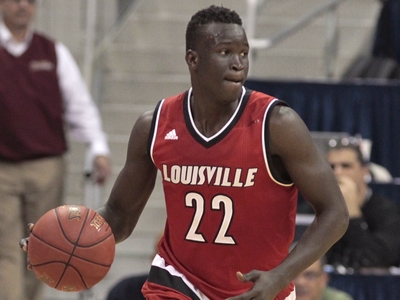









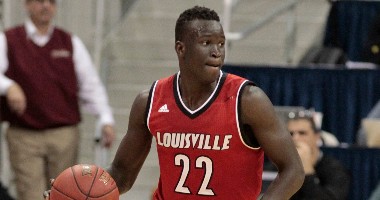

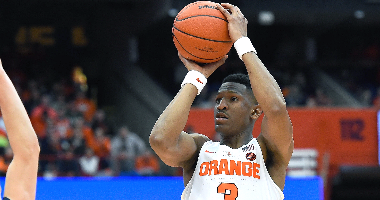



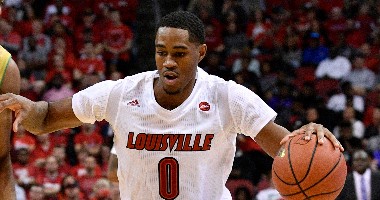





Comments